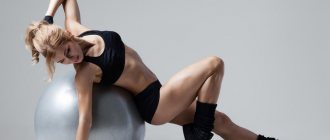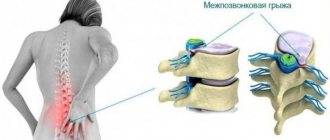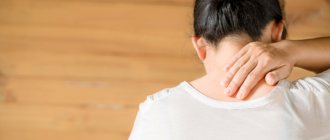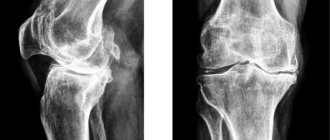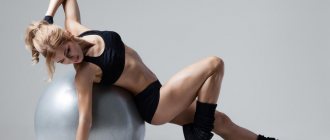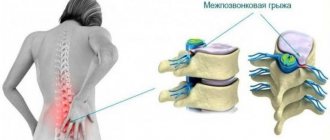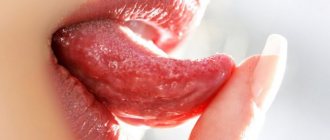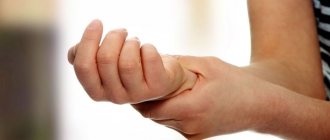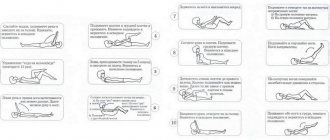Author of the article: Victoria Stoyanova, category 2 doctor, head of the laboratory at the diagnostic and treatment center (2015–2016).
Article publication date: 01/19/2016
Article updated date: 07/15/2020
Doctor Bubnovsky’s gymnastics is not just a set of physical therapy exercises. It is based on kinesitherapy - a special “movement treatment” that uses the body’s internal reserves.
A distinctive feature of Bubnovsky’s technique is the creation of individual programs for the restoration of the spine or joints, which a specialist from the center develops for each patient individually after conducting a special myofascial examination (during which the localization of the pathological focus is very accurately determined).
First, the patient learns how to properly perform physical exercises from specialists at Bubnovsky centers, and then can continue the exercises independently at home.
Three differences between this gymnastics for cervical osteochondrosis and classical physical therapy:
- individual selection of physical activity depending on the identified pathology and the reserve capabilities of the patient’s body;
- strengthening the deep muscles of the muscular corset, which are rarely used when performing conventional exercise therapy;
- a combination of physical activity with breathing exercises, special massage and cryotherapy (therapeutic effects of cold).
To increase the effectiveness of his exercises, Dr. Bubnovsky developed a special simulator, exercises on which, under the supervision of a specialist, help to more quickly relieve pain and restore mobility.
Dr. Bubnovsky’s gymnastics allows not only to stop the destruction of the spine due to cervical osteochondrosis, but also to avoid long-term treatment or surgery.
general characteristics
Bubnovsky’s technique is a set of trainings that are based on kinesitherapy (a separate direction of physical therapy (physical therapy), based on basic medical disciplines and aimed at the psychophysical well-being of the patient). Kinesitherapy literally means “motion therapy.” The complex is individual. Individuality depends on a specific myofascial examination (manual and visual assessment of ligaments, joints and muscles). The assessment focuses on the range of motion of individual joints and the condition of the muscles.
Some deep muscles (for example, the cervical spine), rarely involved in the exercises of classical physical therapy programs (physical therapy) and in everyday life, are developed thoroughly and purposefully using this technique. The muscle frame is strengthened. In addition, the physical activity of this course is accompanied by breathing exercises, cryotherapy, and massage.
Thanks to Dr. Bubnovsky’s exercises, you can strengthen the muscular frame of the neck
Dr. Bubnovsky created a special simulator for quickly relieving pain and restoring mobility. The simulator is applicable in outpatient settings and is safe. It is a simple design equipped with movable blocks, arches and weights (providing decompression and anti-gravity functions) that relieve stress on the spine. At the same time, the muscles actively work.
Dr. Bubnovsky's centers are located throughout the country. There they teach the technique and order of performing individually selected exercises. After training, the patient does everything at home, which is another advantage of this technique.
Training can be carried out in several modes. A gentle regimen is used for exacerbation of inflammatory processes and severe pain. The recovery mode is suitable for rehabilitation purposes, and the training mode is suitable as additional therapeutic measures.
Application
In the modern world, people are rapidly switching to physical inactivity. This leads to stagnant processes in the circulatory and lymphatic systems, so problems with the spine are a fairly pressing problem. There is another extreme - professional sports, which require thorough rehabilitation measures.
Exercises can be performed not only if you have osteochondrosis, but also with headaches and sleep disorders
The Bubnovsky method can be applicable both for pathologies affecting the skeleton and muscles, and for diseases of internal organs. This set of procedures and exercises is aimed at normalizing not only organ disorders, but also the psychological state of the patient. The exercises can be used under the following conditions.
- Osteochondrosis.
- Headache and neck pain (associated with compression of vertebral vessels).
- Sleep disorders (for example, insomnia associated with pain due to degenerative processes in the musculoskeletal system).
- High blood pressure.
- Vegetative-vascular syndrome, vegetative-vascular dystonia is a disorder of the ANS (autonomic nervous system) against the background of somatic or mental disorders due to organic damage to the central nervous system or hormonal changes. There may be general complaints such as tremors, sweating, redness.
- Decreased attention and memory impairment under conditions of constant physical inactivity. This is due to stagnant processes and increased load on the cervical spine.
Despite all the variety of applications of the course, this article focuses primarily on the use of kinesitherapy and its effect in osteochondrosis of the cervical region. Spasmed neck muscles add static load to the vertebral cartilage. The elasticity and other shock-absorbing properties of cartilage discs are reduced. The vessels and nerve endings passing in this area are injured, so the manifestations may correlate with disorders of the internal organs, for example, the vestibular apparatus. Prerequisites for ischemic and radicular symptoms arise. In advanced cases, the following symptoms may appear due to compression of the vertebral arteries:
- headache;
- flashing dots before the eyes;
- dizziness;
- deterioration of attention, memory;
- loss of consciousness;
- coordination problems.
The earlier the diagnosis of osteochondrosis is made, the more effective the treatment and the shorter the rehabilitation period. Timely use of kinesitherapy exercises reduces the risk of complications mentioned above. The load on the axial skeleton during these trainings does not increase, while the muscles are actively strengthened. This is the main difference from everyday physical activity. Kinesitherapy is very effective for the prevention of degenerative processes in this fragile department.
If you start kinesitherapy as early as possible, the effect will come much faster.
Causes of the disease
A person gets osteochondrosis for the following reasons:
- physical and mental stress;
- disturbance in the body's metabolic processes, due to which beneficial elements are not absorbed;
- heredity;
- poor posture during active human growth, development of scoliosis;
- wearing narrow shoes or high heels;
- prolonged or frequent dehydration;
- an incorrectly formulated diet that lacks the vitamins and minerals necessary for normal development;
- bad habits (especially smoking);
- pregnancy (especially multiple pregnancy).
Peculiarities
Despite the fact that Bubnovsky’s technique involves the use of an individual program, some recommendations, exercises and principles are universal. Firstly, exercises according to the method are not an isolated method of treatment: they are combined with classical treatment. The purpose of the technique is to strengthen the muscle corset and ligaments of the cervical region, which will contribute to the main course of treatment and improve the general condition of the patient. If you diligently follow the recommendations, the following results are possible.
- Relieving neck muscle spasms.
- Reducing the load on the axial skeleton.
- Improvement of trophism. Acceleration of excretion of tissue metabolic products.
- Slowing down degenerative processes.
- Reduction of inflammatory processes in tissues.
- Increased performance and quality of life as a result of pain relief.
Thanks to Dr. Bubnovsky’s exercises, the patient’s performance increases, pain and spasms go away
Bubnovsky’s technique does not give instant results. Like any course of treatment aimed at slowing down degenerative processes in the structures of the musculoskeletal system, a set of exercises requires patience and diligence. In addition, stopping only at this technique without self-massage and proper nutrition, which Dr. Bubnovsky recommends in addition to the course, may not give the desired results.
You cannot apply the technique yourself without prescribing a professional selection of an individual program and preliminary training.
For patients with chronic osteochondrosis, kinesitherapy exercises can be performed during exacerbation, but smoothly and with less amplitude. However, any training stops when there is acute pain. An exacerbation should be reported not only to the professional practicing the technique, but also to the attending physician.
Tips for doing gymnastics
In order for treatment of the spine for osteochondrosis to give the expected effect, follow these tips and rules when doing exercises:
- Conduct constant training without skipping the first 14 days;
- Next, the exercise regimen is developed by the doctor, but usually it is at least eight times a month;
- Always control your posture and back position when doing exercises for osteochondrosis;
- The duration of treatment for osteochondrosis is at least two months, but the issue is controlled only by an orthopedist.
It is better to exercise for osteochondrosis according to Bubnovsky in front of a mirror
With the initial form of the disease, but constant training, patients manage to achieve:
- Complete relief from the disease;
- Lack of medication for osteochondrosis;
- Prevention of arthritis and hernia;
- Non-spread of osteochondrosis to the lumbar region.
Such results await those who go to the hospital on time and follow the doctor’s instructions throughout the entire course of treatment for osteochondrosis.
Indications and contraindications
Consultation with a specialist is necessary because in some cases the use of the technique is dangerous. Contraindications to performing exercises using this method for cervical osteochondrosis are as follows:
- postoperative period;
- ligamentous ruptures,
- tendon ruptures;
- unstable hemodynamics (for example, increased risk of heart attack or stroke);
- presence of cancer.
Unfortunately, Bubnovsky’s gymnastics has some contraindications
Exercise is contraindicated after surgery because it can cause injury and open unhealed surgical wounds. For ruptures, contraindications are associated with the risk of acute pain and discomfort.
A course of exercises is actively used to relieve moderate pain in osteochondrosis. Manifestations of dystrophic processes may not be pronounced and begin with a slight feeling of discomfort, which is the danger of this group of diseases. In the future, the pathology can imperceptibly develop to the point that the patient is unable to move the neck.
It should be noted: as with any physical exercise, this set of exercises is also characterized by muscle pain. It will pass within two weeks.
Basic recommendations and exercises
To obtain the desired effect, you must strictly follow the rules and regulations. Any patient should follow the following universal recommendations.
- Do the exercises every day without long breaks.
- Follow the execution technique exactly.
- Start with easy workouts and gradually increase complexity.
- If the pain worsens, reduce the amplitude and intensity of movements, or stop exercising.
- In case of any complication, consult a specialist.
- Do not prescribe a gymnastic course yourself.
It is important to perform the exercises correctly, following the doctor’s recommendations
In addition to exercise, it is necessary to adapt the workplace to prevent relapses and exacerbations. It is recommended to choose the back of the chair on which an office worker spends his entire day of moderate hardness. Throughout the day, you need to monitor your posture and not spend more than one academic hour (40-45 minutes) in a stationary position. This recommendation is based on a number of exercises using a method that can be performed unnoticed by others. To improve hemodynamics in the pelvis, 15 contractions of the gluteal muscles are recommended in one approach. To relieve tension in the body, you can lean back and hang your arms, and then make a slight bend in the thoracic region of the spine. Movements should be smooth, slow and not causing discomfort. The exercise is performed while exhaling. Another exercise involves bending your body in half, touching your head to your knees. This movement can simulate picking up an object that has fallen to the floor.
You can grab the back with your hands and smoothly turn your torso in different directions.
It is important to keep your elbows on the table surface. They shouldn't hang down.
It is not recommended to wear uncomfortable shoes for a long time, especially high heels.
You cannot make sudden turns of your head. All movements must be smooth. Sudden movements lead to spasms. If dizziness occurs, exercises are performed while sitting. The back is always in a level position.
Gymnastics according to Bubnovsky can be performed anywhere, since it is simple to perform and does not require special equipment (you can visit the center to work with the simulator).
Below are some examples of exercises that are effective for cervical osteochondrosis.
Table. Exercises by Dr. Bubnovsky for the treatment of osteochondrosis of the neck.
| Name | Description |
| "Review" | IP: lowered upper limbs, vertical position. The patient turns his neck sequentially in both directions and holds it in the rotated state for several seconds. Should be repeated three times on one side per approach. |
| "Complicated review" | IP: the patient is sitting. The head should be turned to the right (left) side, the left (right) palm is placed on the right (left) shoulder, with the elbow parallel to the floor. The right palm remains on the knee in the same position as in IP. The patient then returns to the PI and repeats in the other direction. With advanced dystrophic disorders, a characteristic sound in the form of a crunch is possible. Repeat 5-6 times. |
| "Fakir" | IP: the patient is sitting. The arms are raised above the head, bending slightly. The head turns and lingers. Likewise in the other direction. |
| "Metronome" | IP: hands are down, the patient is standing. The cheek approaches the shoulder and lingers for half a minute. The same movements are repeated in the opposite direction. This is done six times in each direction. |
| "Heron" | IP: the patient is sitting on a chair. Hands are on your knees. The patient straightens and abducts his arms, simultaneously throwing his head back, then returns to the PI. For acute pain symptoms, the algorithm is performed slowly. Repeat 5-6 times. |
| "Goose" | IP: vertical position. Hands are placed on the belt, the chin is kept parallel to the floor. The patient pulls his chin forward and places it on his shoulder, slightly turning his torso. The body remains in this position for up to a minute. Six identical movements are performed in one approach. The same is repeated in the other direction. |
| "Spring" | Initial position (IP): the upper limbs are lowered down, the patient is in an upright position. You should slowly bend your neck ventrally (tilt your head forward), and then hold it in this position for a couple of seconds. Then accept the IP. Repeat 5-6 times. |
When performing, be sure to follow the rules. Before the exercise, you need to warm up your neck muscles. Self-massage and head turns are effective for this. For similar purposes, a contrast shower is additionally used. The first few weeks until the clinical picture weakens, the exercises are performed every day. After - a day later. When performing exercises, it is better for the patient to look at himself in the mirror for self-control. All movements should be slow and smooth, especially with moderate pain.
As mentioned earlier, Dr. Bubnovsky developed a special simulator. We will talk about it below.
Bubnovsky universal simulator
Sergei Bubnovsky: “Osteochondrosis is not a death sentence”
On the Internet you can find and read online the book by Sergei Bubnovsky “Osteochondrosis is not a death sentence.” In it, the author describes both performing exercises and other methods of combating osteochondrosis and alleviating the condition. Among other things, he advises adhering to the following precautions:
- Don't try to do all the exercises for a large number of repetitions at once. Excessive stress can cause the condition to worsen. Start with a small load and increase it gradually.
- At the initial stage of kinesitherapy, muscle pain and even cramps are possible. You need to be patient while the body adapts - over time, the unpleasant phenomena will disappear.
- If you are constantly taking medications that normalize cardiac activity, you should not stop abruptly. In addition, the author recommends that the patient work with a psychotherapist, since many experience a psychological fear of pain and therefore suppress it with pills.
- When performing exercises, you need to pay special attention to diaphragmatic breathing.
Judging by the reviews of people who have tried gymnastics on themselves, it perfectly helps relieve pain and restores the mobility of the vertebrae. After just a couple of months, most patients feel much better. A good way to improve the health of the spine and joints is Dr. Borshchenko’s isometric gymnastics, about which there is already a review article on our website.
We invite you to watch a video with Bubnovsky’s method of treating cervical osteochondrosis.
Self-massage and nutrition
To improve the effect of exercise, the author of the technique recommends self-massage as a way to warm up the muscles. The massage is performed independently in the following order.
- Stroking the back of the head with a gradual increase in speed of movement and pressure.
- Massaging the vertebrae with finger pads.
- Circumference of the back of the neck; massage from bottom to top.
- Repeat similar movements for the front side.
To obtain a more effective result, it is recommended to additionally perform self-massage.
The self-massage algorithm consists of simple movements and does not require much time, exercise equipment, a gym or the services of a professional massage therapist.
In addition to the main course of exercises, in addition to self-massage, diet correction is required. It is necessary to avoid fried, smoked and sweet foods; sweet carbonated drinks. A complete cessation of smoking and alcohol is especially recommended. You can eat lean meats, fruits, vegetables, herbs (dill, parsley), fermented milk products (cheese, cottage cheese) and sea fish. Salt should not be excluded from the diet, but it should be added to food in moderation - excess consumption not only leads to metabolic problems affecting bone tissue, but also to a deterioration in the functioning of the cardiovascular system. Alcohol and smoking particularly contribute to degenerative processes.
Preparing for a massage
The massage is performed in two positions.
- The patient lies on a stable surface on his stomach with his arms extended along the body. Hands raised, head turned sideways towards the massage therapist.
- The patient sits in a sitting position. The face is facing the back of the chair. The arms are folded crosswise, the head is tilted upward. For convenience, you can place a small cushion under your armpits.
Having taken a comfortable position, you can begin the procedure. To do this, you must first visually divide the back into sections:
- The collar part is from the beginning of the skull to the upper edge of the scapula.
- The back is from the upper base of the shoulder blade to the outer rib.
- Lumbar region - from the last lower rib to the coccyx.
Advantages and disadvantages
The main advantage of Bubnovsky’s technique is its versatility. As noted earlier, the method is used both for pathologies of the musculoskeletal system and for diseases of internal organs. But the universality lies in the fact that the course is applicable to representatives of any gender and is not associated with age restrictions.
Gymnastics developed by Dr. Bubnovsky has many advantages
The technique is used not only for degenerative processes (for example, osteochondrosis), but also for injuries. This set of training, accompanied by physiotherapy in the form of cryotherapy and the use of a sauna, is effective for postoperative rehabilitation and for the prevention of relapses. The technique is safely combined with drug therapy. The effect is long lasting. Exercise also has a systemic effect on the body. They help maintain normal weight, strengthen muscles, and improve posture. The most important advantage is that Dr. Bubnovsky’s technique is not classified as alternative medicine. Kinesitherapy is recognized by classical medicine and is patented.
The disadvantages include the duration of the course, but it is important to note that this point is individual. As with any other treatment, strict adherence to recommendations and rules is necessary. The effect requires discipline and diligence.
The number of classes is determined by the doctor (can be up to eight per month). The course duration is at least three months. It is important to note that the Bubnovsky method is best used in combination with the main treatment. Management of patients with pathologies in the cervical spine is the prerogative of vertebroneurologists. It is recommended to use the technique after consultation with specialists of a more narrow focus, since the exercises are associated with large dynamic loads and can cause dislocations of the intervertebral discs. It is dangerous to carry out a set of exercises for undiagnosed intervertebral hernias (there is a separate course of exercises for hernias). In this case, the following symptoms are added to the symptoms of osteochondrosis: tremor (trembling) of the limbs, pain in the shoulder blades even at rest, fatigue. It is more effective to use the technique after the main treatment to prevent relapses.
The course of treatment is quite long, but you won’t be able to get rid of neck discomfort quickly
Life story
My cousin is a successful programmer and loves his job very much. But she has the only (for her brother) disadvantage - the need to spend more than 8 hours a day at the computer. My brother is already over 30, and not long ago he started having problems with his neck. At first there was a feeling of tension, then real pain began - and severe. It was difficult to calm them down; ointments helped little.
As a result, one friend advised his brother to have a simple solution - exercises for the neck according to Bubnovsky! This exercise is perfect for both “athletes” and beginners, that is, people with a sedentary lifestyle. Only 20 minutes of such activities a day literally saved my brother and returned him to normal life!
Now he is a fan of this system. It was partly his experience that inspired me to write this article.
It will also be useful for you, dear reader, to familiarize yourself with therapeutic exercises for the spine at the link.
Now, dear readers, you also know what to do to remove pain from the cervical region and make it healthy. If you found the article useful, interesting, and liked it, share it on social networks. I'm sure many of your friends with neck problems will be grateful to you for this. Like the material and subscribe to my blog. See you again!
Physical education - clinics in
Choose among the best clinics based on reviews and the best price and make an appointment
Family
Scoliosis Treatment Center named after K. Schroth
Moscow, st.
Azovskaya, 24, building 2 POM VI/KOM 5,6,7/ET 1 Sevastopolskaya
+7
- Consultation from 1500
- Exercise therapy from 2700
0 Write your review
Family
Medical
Moscow, st.
Arbat, 28/1 building 1 Smolenskaya
+7(495)212-90-98
- Reception from 700
- Neurology from 700
- Physiotherapy from 155
10 Write your review
Family
Medical
Moscow, Maroseyka, 10/1, building 3
Kitay-Gorod
+7
- Reception from 7500
- Manual therapy from 2000
- Massage from 2000
9 Write your review
Show all Moscow clinics
Physical education - specialists in Moscow
Choose among the best specialists based on reviews and the best price and make an appointment
Massage therapist
Zakrevskaya Natalya Alekseevna
Moscow, 1st Lyusinovsky Lane, 3 B. (Medical) +7
0 Write your review
Masseur
Avtandilyan Arsen Alikovich
Moscow, Landyshevaya st., 14, bldg. 1 (Medical)
+7
0 Write your review
Masseur
